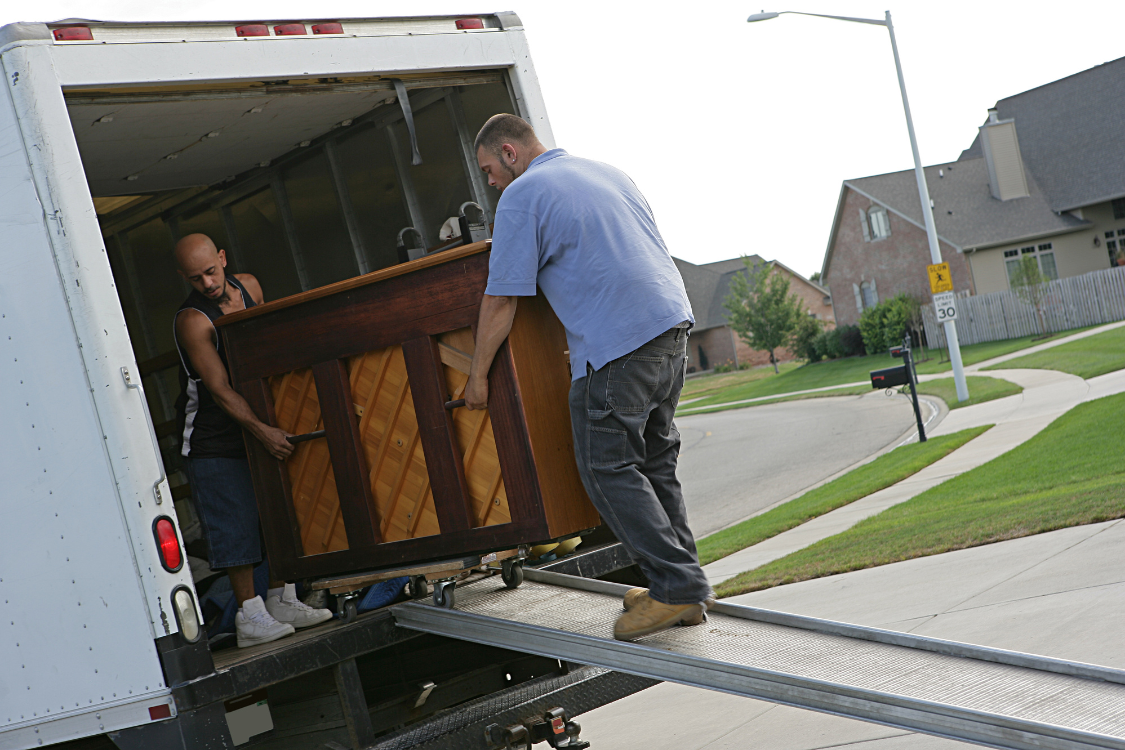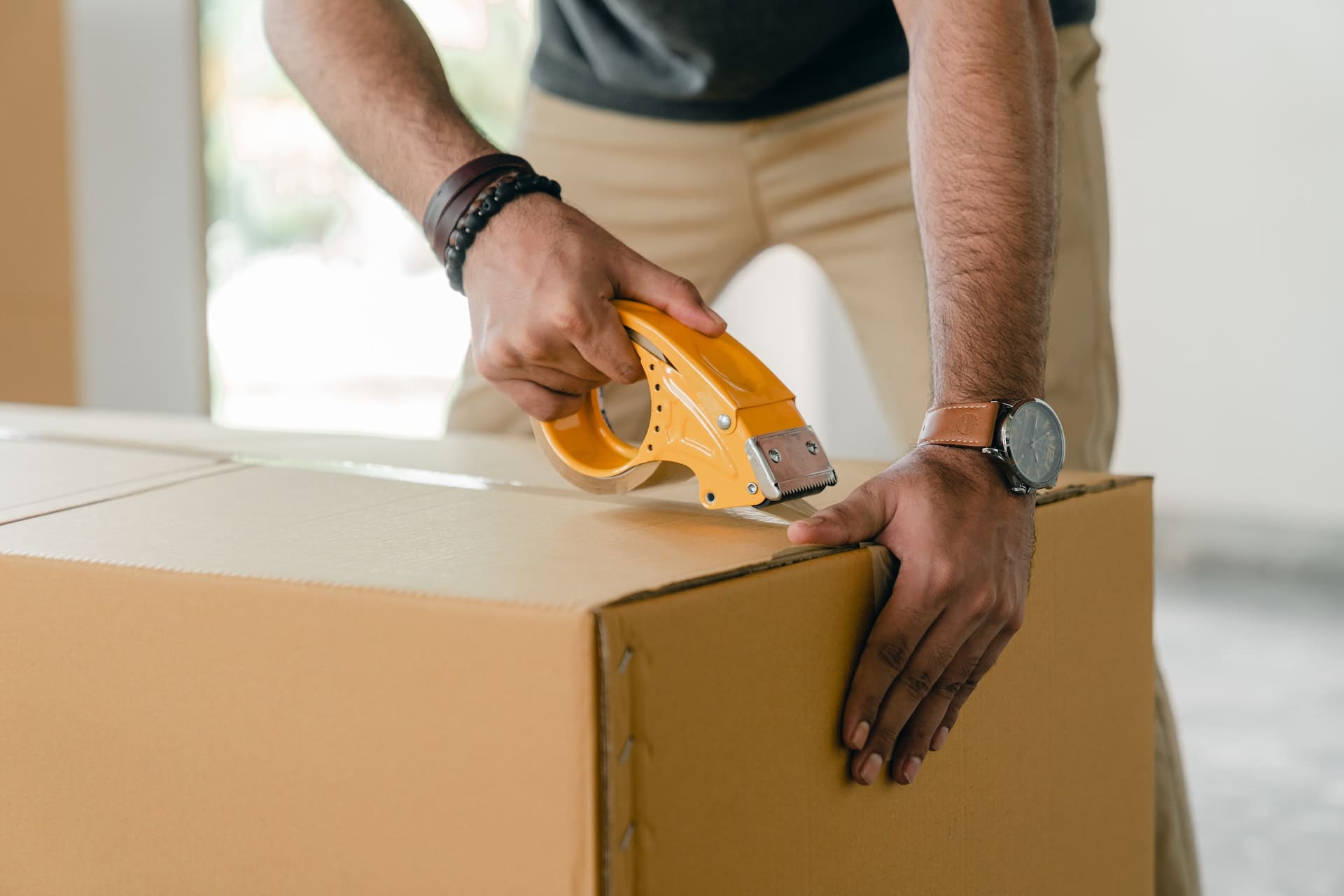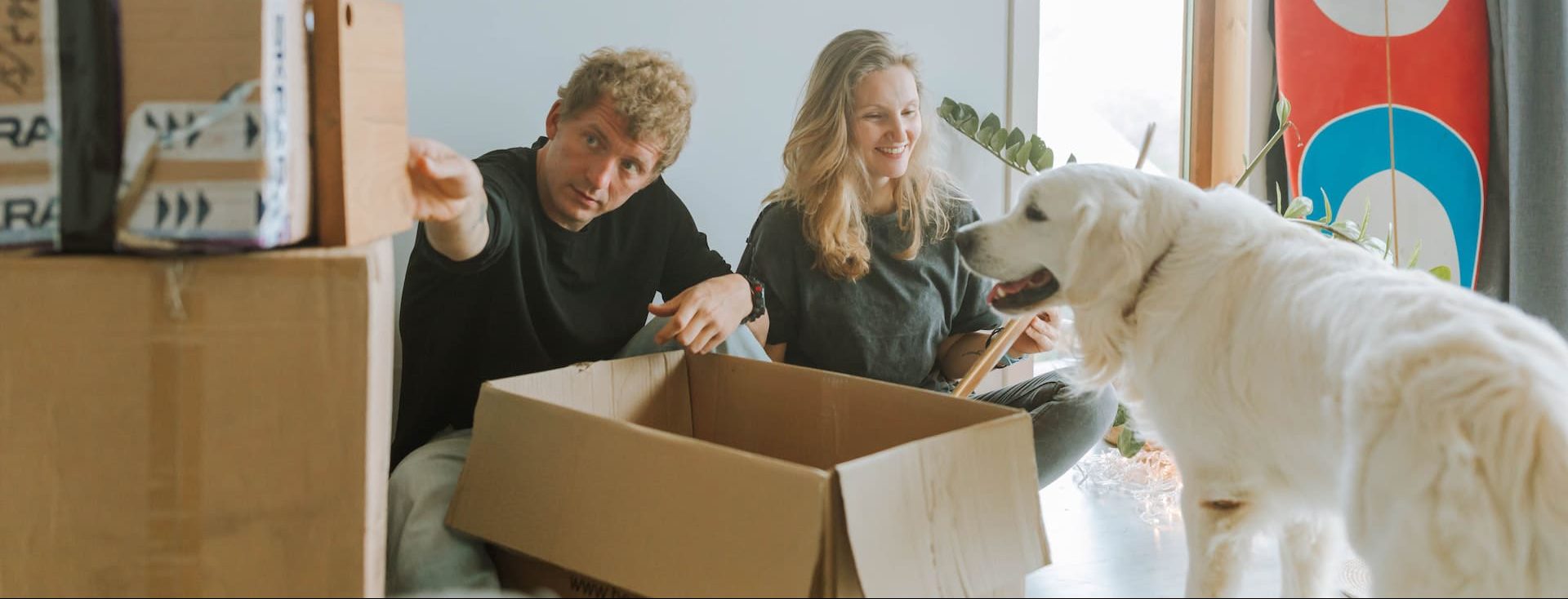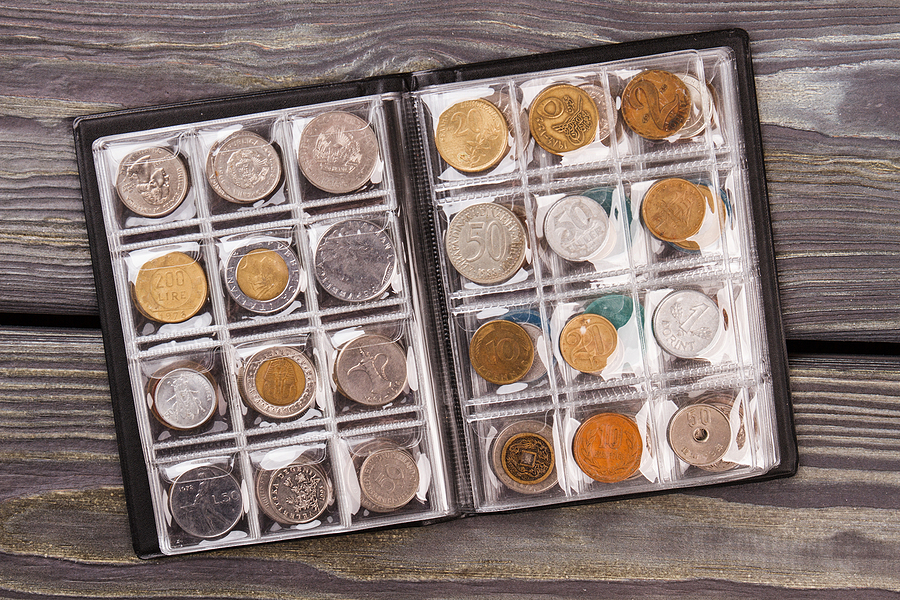Relocating, whether it is for work, school, or a fresh beginning with your family, can take a significant amount of work and time to complete from start to finish. This is particularly true for individuals who have never moved before and have decided to relocate to a different province or country with a pet. Unlike travelling to your new location with children and other members of your family, moving pets can be a daunting task that needs to be performed correctly to ensure the safety and comfort of your animals. As such, we understand that you may have questions regarding moving pets long distances. This is why we’ve put together a list of some of the most frequently asked questions we often receive as a professional long-distance moving company in hopes that pet owners can find some clarity on the process before the date of their scheduled move. Therefore, for more information about moving your pets long distances, keep reading.
How can I make my pets’ long distance move easier?
Moving a long distance is more difficult for animals than it is for you because they do not comprehend what is happening. What they can tell, however, is that something isn’t right in their daily routine. As such, the more you do ahead of time to calm them down during their journey, the happier and healthier everybody will be. Making the decision to collaborate with a professional long-distance moving company with a credible and reliable business is the first step toward lowering the stress of a long-distance move for your pet. This is why it is essential that you choose a company with an excellent record for handling pets with the same attention and consideration that you do in your own household.
Beyond this, after choosing a professional long-distance moving company to assist you with your move, you will also want to take your pet to see its veterinarian. During this check-up appointment, you will want to confirm with your veterinarian that your pet is healthy and able to make the long-distance move. Furthermore, it is essential to note that if you require air transportation during your long-distance move, most airplanes will not allow you to sedate your pet in order to transport them. Therefore, it is imperative that you consider the following methods to calm your pet down as much as possible before your move:
- Get a comfortable kennel for your pet.
Shipping pets by air, whether nationally or internationally, necessitates the use of an air carrier kennel, as these kennels are precisely created to keep your animal secure throughout its journey. There should be no rough edges that could injure your cat or dog, and there should be plenty of ventilation. As such, if your pet does not currently have a travel kennel, we suggest purchasing one as soon as possible and allowing them to become familiar with it. It will help them naturally become more comfortable with being in their kennel for long periods of time.
- Consider cabin transportation
If your pet is a smaller size, you may be able to have it with you on your flight. Therefore, we suggest speaking with your airline to determine what size and weight they allow in flight before deciding whether this is an option for you.
- Keep your pet on a regular schedule as much as possible.
Change frightens pets, so try to maintain a regular routine for them as much as possible. To do so, feed them at their usual time and location. Enable more than enough one-on-one time for them and try to take your pet to daycare or keep them in another room when moving-related operations are particularly messy.
Should I take my pets to the vet before moving?
As we mentioned above, it is always suggested that you take your pet to the vet before moving, especially when you’re moving a long distance. Your veterinarian can assist you in preparing your pet for relocation. You’ll need to ensure that all of their shots are up to date if you are moving to a new country. Furthermore, anxious pets may exhibit unusual behaviour, such as nibbling when they ordinarily would not. The same can be said for peeing inside. Talk to your vet regarding possibilities for soothing your pet, especially if you know your pets are prone to anxiety. Your veterinarian will be capable of advising you on the best natural methods for calming your pet down during the moving period.
Furthermore, once you arrive at your destination, before releasing your pet when you make it to your new destination, make sure your new residence and any outside yards are pet-proof. In addition, you should aim to spend a significant amount of time reassuring and entertaining your pet afterward. Confirm that they are aware of their new location and that you have a sufficient supply of their familiar possessions at the new residence that can help them feel comfortable and relaxed. While a few new toys might be fun, you might want to hold off on buying a brand-new bed for your pet until you and your family have settled in your new home.
How can I make my pets comfortable during the ride?
On the other hand, your long-distance move requires vehicle transportation rather than airplanes; it is essential to make your pet as comfortable as possible during the ride. To do this, you want to expose them to your car as much as possible before the day of your move. This includes taking them for your rides and using lots of treats to praise their behaviour. We suggest starting with short rides and slowly increasing the length of them so they become more accustomed to longer travel times. Beyond this, consider installing a pet safety seat if you do not wish to use a kennel. This will help them stay safe and in one comfortable place in the car while you are on the road.
How can I keep them safe?
Moreover, beyond keeping your pets comfortable during your long-distance move, it is also equally important to keep them safe. Therefore, what you will first want to do is take your car to the mechanic and ensure that everything is working correctly. This will help you avoid complete breakdowns during your journey.
After that, make a decision on how you will transport your pets in your vehicle. The ideal spot is generally in the back of the car, away from any of the airbags. At the same time, If your pets are excitable or unfamiliar with road transport and being in your car for long periods of time, you may want to consider a method to make sure they stay in one location while you are on the road. Some standard techniques that you can consider include backseat barriers, harnesses, and carriers that attach to a seat belt to restrict movement in the scenario where you are forced to suddenly stop. Furthermore, keep in mind that your pets should also have the freedom to be able to move around and sleep soundly.
Furthermore, the very last thing you want to do is to rummage through your belongings to find the items your pet requires while travelling. You’ll need a basic first-aid kit, veterinarian documents, more than enough of your pet’s regular food, water, travel bowls, a preferred stuffed animal or two, treats, and a blanket, among other items that will help ensure your pet’s complete comfort throughout your journey. We should also note that pet owners should pack extra food in addition to their travel kit in case they can’t find their favourite brand at their destination. This allows pets to gradually adjust and prevents stomach issues from happening, which can offset their behaviour and make the adjustment period in their new home more stressful.
Final thoughts on moving your pets long distance.
Moving long distances is a stressful endeavour, especially when you have pets. This is why it is essential to make sure you and your family are well-prepared ahead of time. Remember, your pet is a part of your family. As such, you will want to make sure that you have ticked off all your boxes to ensure your pet’s complete comfort and safety during your travels. At the same time, it is also crucial that you partner with a professional and reliable long-distance moving company that can help you prepare your home and personal belongings for the journey ahead of you. Furthermore, they can also help with packing, unpacking, and other additional services that can take some of the stress and responsibilities off of your shoulders.
Are you moving long distances with your family and pets? If so, it’s time to partner with a professional moving company that has your best interests in mind.
Atlas Care has more than 50 years of experience aiding Canadians to relocate across the country and all over the world, and we are ready to ensure you arrive safely. As a result, if you’re currently in the initial stages of planning your long-distance move and need assistance, our team of friendly and experienced professionals is available to assist you whenever you need it.
Request a free moving quote from Atlas Canada’s long-distance movers today! We look forward to helping you move your family, pets, and belongings safely.
Moving Pets Long Distance With Atlas Van Lines
What is the best method to transport pets?
When it comes to transporting our beloved pets, we want nothing but the best for their safety, comfort, and well-being. Whether you’re planning a road trip, flying across the country, or just making a quick visit to the vet, choosing the right method for transporting your furry friend is crucial. Below, we’ve put together a comprehensive list of some of the best methods to transport pets.
For many pet owners, travelling by car is the most common and comfortable method. For smaller pets like cats, small dogs, or small rodents, using a secure crate or carrier is often the safest option. Make sure it’s well-ventilated and secured in the car. For larger dogs, harnesses and seat belt restraints designed for pets can help keep them secure during car trips. Also, make sure to take regular breaks for bathroom breaks, exercise, feeding times, and hydration.
If you need to travel long distances or internationally, flying with your pet may be necessary. Check with the airline for their specific regulations and requirements. Many airlines have guidelines for pet carriers and may have restrictions on the size and breed of pets allowed in the cabin. Larger pets typically travel in the cargo hold, so it’s essential to choose an airline with a good track record for pet safety and comfort.
Some public transportation systems, like buses and trains, allow pets, but rules vary. Check with the specific provider for their policies. If you’re travelling by boat or ship, consult with the operator for their pet policies and ensure your pet has a safe and secure place to stay during the journey.
- Pet Taxi or Transport Service
You may also want to consider using a professional pet transport service, especially for long-distance or international travel. These services can handle all the logistics and ensure your pet’s safety and comfort.
Ultimately, the best method for transporting your pet will depend on your pet’s size, type, and individual needs, as well as the specifics of your travel plans. Always prioritize your pet’s safety, comfort, and well-being when making transportation decisions.
Can you buy a seat for a large dog on a plane?
You’ve likely heard that some airlines allow small dogs to travel in the cabin with their owners. However, one common question that arises when people plan to fly with their dogs is whether they can purchase an extra seat on the plane for their larger dog. The truth is most airlines do not allow large dogs to have their own seats on a plane like human passengers. Typically, larger dogs are required to travel in the cargo hold or in specially designated areas within the cabin, subject to specific airline policies and regulations.
Nevertheless, there are a few airlines that explicitly state in their pet policies that you have the option to purchase an additional seat for your large dog. Airlines that allow larger dogs in the cabin include:
- JSX Airlines
- Aero
- Surf Air
- BLADE
- Tradewind Aviation
However, each airline has its own stringent rules and regulations that you must follow. Be sure to review each airline’s rules and regulations to ensure that your large dog meets their cabin requirements.
What about service and emotional support dogs?
Service dogs and emotional support animals may have different rules and are often allowed to travel in the cabin with their owners. However, the rules for these animals have become stricter in recent years, so it’s crucial to check with the airline for their specific requirements and documentation needed.
Can you travel with pets in Canada?
Canada’s breathtaking landscapes, from the majestic Rocky Mountains to the pristine coastlines, make it a dream destination for travellers seeking adventure and natural beauty. For pet owners, the allure of exploring this vast country with their furry companions is undeniable. The good news is that Canada is indeed a pet-friendly destination, welcoming travellers with pets of all sizes and breeds. However, before embarking on your Canadian adventure with your four-legged friend, it’s essential to be well-informed about the rules, regulations, and considerations that come with travelling with pets in the Great White North.
Pet Health Certificate
When travelling to Canada with your pet, especially if you’re coming from another country, you’ll often need a valid pet health certificate issued by a licensed veterinarian. This certificate serves as proof of your pet’s good health and vaccination status.
Vaccinations
Rabies vaccination is particularly important when entering Canada. Most travellers bringing their pets into the country are required to provide evidence of up-to-date rabies vaccinations. Keep your pet’s vaccination records handy, as they may be requested at border crossings.
Border Crossing
Upon arrival at a Canadian border crossing, you should declare your pet. Border officials will likely ask to see your pet’s health certificate and vaccination records to ensure compliance with Canadian regulations.
Pet-Friendly Accommodations
Canada offers a wide range of pet-friendly accommodations, including pet-friendly hotels, motels, and even some vacation rentals. However, policies regarding pets can vary, so it’s advisable to call ahead and confirm their pet policy, any associated fees, and any specific rules they may have in place for guests travelling with pets.
Transportation
Different modes of transportation within Canada have specific rules for travelling with pets. For example, airlines have their own pet travel policies, including crate requirements and fees. If you plan to travel by bus or train, it’s important to check with the respective transportation company for their pet policies and any restrictions.
Leash Laws
In Canada, leash laws and regulations can vary by city and municipality. Some areas may have strict leash laws, while others may allow dogs to be off-leash in designated areas. It’s important to familiarize yourself with local regulations, especially if you plan to visit parks or public spaces with your pet.
Pet Supplies
When travelling with your pet, it’s essential to pack all the necessary supplies. This includes food, water, bowls, a leash, a collar, identification tags with your contact information, waste bags, and any medications your pet may need.
Pet Safety
Use appropriate carriers or restraints in vehicles to prevent accidents and injuries. Ensure that your pet is secure and comfortable throughout the journey, whether you’re travelling by car, plane, or other means.
Emergency Contacts
Before your trip, research and have the contact information for local veterinarians or animal hospitals in the areas you plan to visit. This way, you’ll be prepared in case of any health concerns or emergencies involving your pet.
How do you transport pets when moving across the country?
Transporting pets when moving across the country requires careful planning to ensure their safety, comfort, and well-being throughout the journey. First, you’ll want to start planning well in advance of your move by researching and understanding the regulations and requirements for transporting your pets, such as vaccination requirements, quarantine rules, and any specific regulations for the states or provinces you’ll be passing through or arriving in. You will then want to schedule a visit to your veterinarian for a health checkup and to ensure your pet is up-to-date on vaccinations and medications. Don’t forget to request copies of your pet’s medical records, including vaccination certificates, in case they are needed during the journey.
Next, you’ll need to decide on the best way to transport your pet across the country. Generally, your options include car travel, air travel, and pet relocation services. If you’re driving, make sure your pet is secure in a well-ventilated carrier or crate. Stop frequently for breaks to allow your pet to stretch, relieve themselves, and have access to water. If you’re flying, research pet-friendly airlines and their policies. Airlines have specific regulations for pet travel, including the type of carrier allowed, temperature restrictions, and health certificates. Hiring a professional pet relocation service can also be beneficial, especially if you have multiple pets. These services can handle all aspects of pet transportation, including paperwork, flights, and ground transportation.
Top Tips to Consider
- Help your pet acclimate to their carrier or crate beforehand if they are not used to it.
- Update your pet’s identification tags and microchip information with your new contact details before the move.
- Pets can sense your stress, so remain calm and patient during the journey.
- Don’t forget to secure your pet’s carrier or crate in the vehicle or follow airline guidelines for securing it during flights.
How are pets cared for on long-haul flights?
Caring for pets during long-haul flights involves careful planning and strict adherence to airline regulations, with a primary focus on ensuring the safety and comfort of your furry companion. Choose an airline-approved carrier that offers sufficient space for your pet to stand, turn around, and lie down comfortably. In the weeks leading up to the flight, gradually introduce your pet to the carrier to help reduce anxiety. Line the carrier with absorbent bedding, and pack essential items like familiar toys, a leash, identification tags, and any required medications. Also, give your pet an opportunity to exercise and relieve themselves before the flight. This can help reduce anxiety during the journey.
Depending on your pet’s size and the airline’s policy, they may either travel in the cabin with you or in the cargo hold. Small pets often accompany their owners in the cabin, while larger pets are placed in the cargo hold, which is pressurized and temperature-controlled to ensure their comfort and safety. Throughout the flight, follow the airline’s instructions for securing the carrier or crate. After landing, prioritize your pet’s well-being by providing them with water and an opportunity to relieve themselves.
How do you travel with a pet reptile?
Travelling with a pet reptile requires special attention to their unique needs, as reptiles have different requirements compared to dogs, cats, or other common pets. Start by researching border crossing and local regulations at your destination regarding reptile ownership and transport, as not everywhere allows for pet reptiles. Select an appropriate container or enclosure for your reptile, ensuring it offers adequate ventilation and security to prevent escapes. You can even use additional restraints like zip ties if necessary to securely latch or fasten the container. You may also want to create hiding spots within the container to reduce stress for your reptile during transit.
As reptiles are cold-blooded and highly sensitive to temperature fluctuations, you’ll need to maintain proper temperature conditions throughout the journey. Employ heat packs or lamps as needed to ensure your pet remains within their preferred temperature range. Safely transport the container by avoiding direct sunlight and extreme temperatures and minimizing temperature fluctuations when opening it. Also, make sure you label the container with your contact details and any vital care instructions in case of emergencies.










